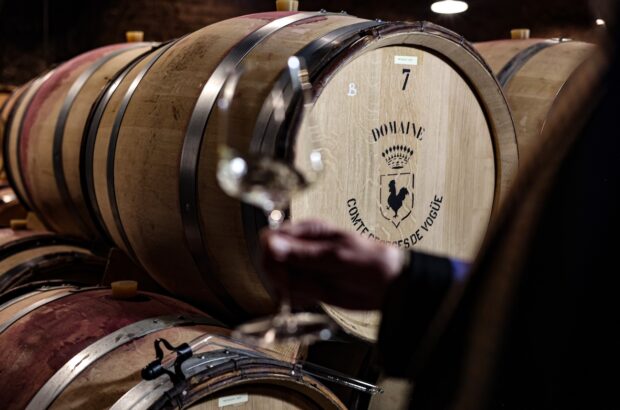Decanter’s globetrotting consultant editor gives us a round-up of recent tastings, his views on current issues in the wine world and top bottles to drink or keep
2009 Beaujolais and Mâconnais Five beautiful post-vintage October days in the Mâconnais and Beaujolais made me regret I no longer live in France. The first stop: a tasting in Villefranche-sur-Sâone with Georges Duboeuf’s son, Franck, comparing the 2009s to the ’05s and ’03s, which left no doubt that 2009 is really not to be missed. The following day was for whites, starting with the mineral, high-elevation wines of Domaine Barraud at Vergisson, then lunch at the historic Château Fuissé, whose vineyards Les Combettes, Les Brulées and Les Clos are likely to be the first in the Pouilly-Fuissé appellation to be classified premier cru. Dinner in Mâcon was hosted by Les Artisans du Blanc, an association of 19 domaines (including those of Burgundians Anne-Claude Leflaive and Dominique Lafon), who stress the importance of terroir and natural winemaking with passionate individuality.
The next three days were almost entirely red, mostly devoted to seven of the 15 members of Expressions d’Origine who represent the depth of quality across the 10 Beaujolais crus. Domaine Paul Janin’s Clos des Tremblay, Moulin-à-Vent; Louis Jadot’s Château des Jacques Clos des Grands Carquelins, Moulin-à-Vent; Dominique Piron’s Côte de Py, Morgon (and that of his neighbour Jean-Marc Burgaud, recommended here last month); Vincent Audras’s Clos de Haute Combe, Julienas; Château Thivin’s Côte de Brouilly and Château de la Chaize’s Brouilly – all great wines. Finally, Jean-Paul Brun of Domaine des Terres Dorées showed that he merits ‘Beaujolais’s Best Winemaker’ gong from French critic MichelBettane, with a superb Grille Midi, Fleurie and the region’s best Beaujolais white – and not a wine over 12.5% alcohol. (Importers: Domaine Direct, SavageSelections and The Wine Society).
New icon of Chile
Along with 100 guests – principally the agents for Errazuriz in 70 countries – I attended three action-packed days in
Chile in November, the high point being the opening of Eduardo Chadwick’s Icon Winery on his family’s Don Maximiano Estate in the Aconcagua Valley. The first visit was to the recently planted Aconcagua Costa vineyards,
the Costa (near the coast) being a new derivative of the Aconcagua appellation. Seven varieties are planted on
230ha (hectares), with Sauvignon Blanc, Pinot Noir, Chardonnay and Syrah heading the list. A further 70ha are
to be planted on stunningly steep slopes, leaving 800ha for flora and fauna. The 2010s are already very striking: the
whites showing perfectly balanced fruit and acidity, while the drier style Syrah and especially the extraordinary Pinot
Noir which impressed Pierre-Henry Gagey of Louis Jadot, prove the point of this new appellation.
Designed by architect Samuel Claro with the bowlshaped surrounding vineyards in mind, the Icon Winery’s soaring, cathedral-like entrance leads to a circular three-level, gravity-fed winery with natural light streaming in from all aspects. Icon wines at dinner included Don Maximiano Founder’s Reserve 2001 and 1997, Cabernet Sauvignon showing through with flesh and grip; the powerfully spicy La Cumbre Syrah 2002; and, my personal favourite, Kai 2005, Chadwick’s Carmenere pride and joy. Several guests were singled out for special mention and I was even made an honorary Huaso – a grander version of the Argentinian Gaucho – and have the cape and hat to prove it!
An Indian gala
With an afternoon between planes, I headed to a board meeting of The Wine Society of India in Bangalore, home to
Dr Vijay Mallya’s United Breweries. His Kingfisher Beers dominate all rivals, and sales of more than 100 million cases
of whisky in the India subcontinent alone place him a close second in global spirit sales to Diageo – UB’s Scottish
brands include Jura, Whyte & Mackay and Dalmore. Wine consumption in India lies at 1%, compared to 50% for beer
and 49% for spirits. If the dinner the WSI gave in Mumbai to 200 paying guests under the theme ‘Wine – the bringer of
joy; the song of the earth’ is anything to go by, it won’t stay at 1% for long.
First growths at Decanter
I arrived back in time for the Decanter Fine Wine Encounter’s unique first growth masterclass. My question on winemaker influence was answered by Jean-Philippe Delmas of Haut-Brion, who said that while terroir, weather and human element all had a bearing: ‘the final blend is egoistical – it comes down to what I like and my taste is not the same as my father’s, so my wines are not the same either’. A masterclass with a first growth of California, Opus One, the Mondavi-Rothschild venture in Napa, followed the next day, with eight vintages presented by winemaker Michael
Silacci, from the rare first vintage 1979 and ending with 2006. Silacci left no doubt that the dominating influences on a wine were identical to those at Haut-Brion.
Two small tastings stood out recently, the first being Tim and Judy Finn’s celebration of their 30th vintage at Neudorf, the first vineyard planted in Nelson, on New Zealand’s South Island. The best wines go under the Moutere label and the off-dry 2009 Pinot Gris, limey and lifted 2009 Riesling, Chassagne-like 2008 Chardonnay and vigorous
2008 Pinot Noir took my votes for the young wines; the older vintages, in order, being 2004, 2005 and 2002,
showed superbly at lunch. (Importer: Richards Walford). The second tasting was a range of 11 wines made by the
brilliant Rianie Strydom at Haskell Vineyards in South Africa’s Stellenbosch. Under the second label, Dombeya, a white peach 2009 Chardonnay and a vineyard-influenced 2007 Shiraz shone, while the Haskell Aeon Syrah 2008 with 5% Mourvedre had great potential and individuality, and the Bordeaux blend Haskell IV 2008 was balanced, enhanced
but not smothered by 80% new oak. At £30 these should be considered for the cellar. (Importer: Lea & Sandeman)
Written by Steven Spurrier







